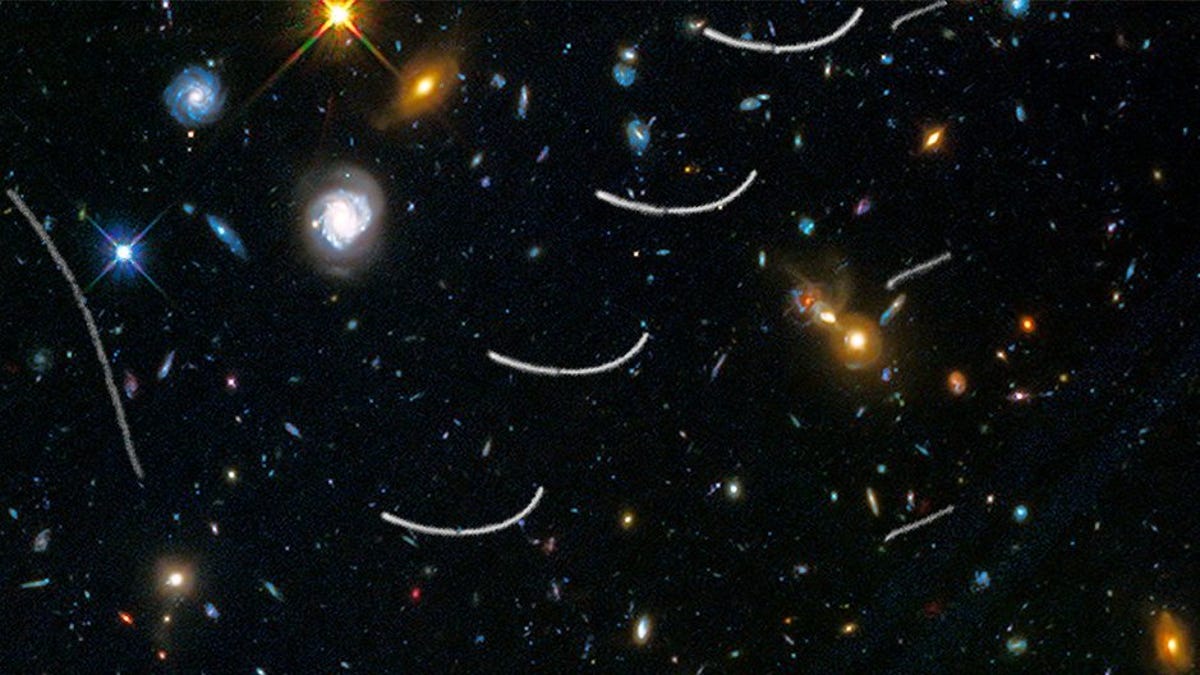Volunteers and AI Spot Over 1,000 Unidentified Asteroids in Hubble Images
Turns out Hubble is a mighty asteroid hunter.

Many galaxies are on display in this Hubble image. The curving streaks of light are asteroid trails.
The Hubble Space Telescope is known for grandiose images of the universe. Galaxies! Planets! Nebulae! But sometimes much smaller features, like the distinctive paths of photobombing asteroids, are the stars of the show. The combined efforts of citizen scientist volunteers and artificial intelligence turned up 1,701 asteroid trails hiding out in 1,316 Hubble images.
Hubble is a joint project from NASA and the European Space Agency. "The project highlights Hubble's potential to image faint, previously unknown asteroids and represents a new approach to finding asteroids in astronomical archives spanning decades, which may be effectively applied to other datasets," the ESA Hubble team said in a statement on Friday.
Citizen scientist spots main-belt asteroid 2001 SE101 passing in front of the Crab Nebula (M1) in this Hubble image.
The Zooniverse platform hosted the Hubble Asteroid Hunter project. Over 11,400 volunteers combed through Hubble images taken between 2002 and 2021, identifying the curved trails of asteroid in those observations. That effort helped to train an AI system to look for and catalog the trails.
About a third of the trails could be traced to known asteroids, but that left 1,031 mystery trails most likely connected to faint asteroids located between Mars and Jupiter. ESA described these small asteroids as "poorly studied."
"These trails could give the astronomers insightful clues about the conditions in the early solar system when the planets were forming," the ESA Hubble team said.
Next, the data will be used to help researchers learn more about the orbits and sizes of the unidentified asteroids. As a bonus, we get to enjoy the scenic Hubble images decorated with curving streaks of asteroid activity.

